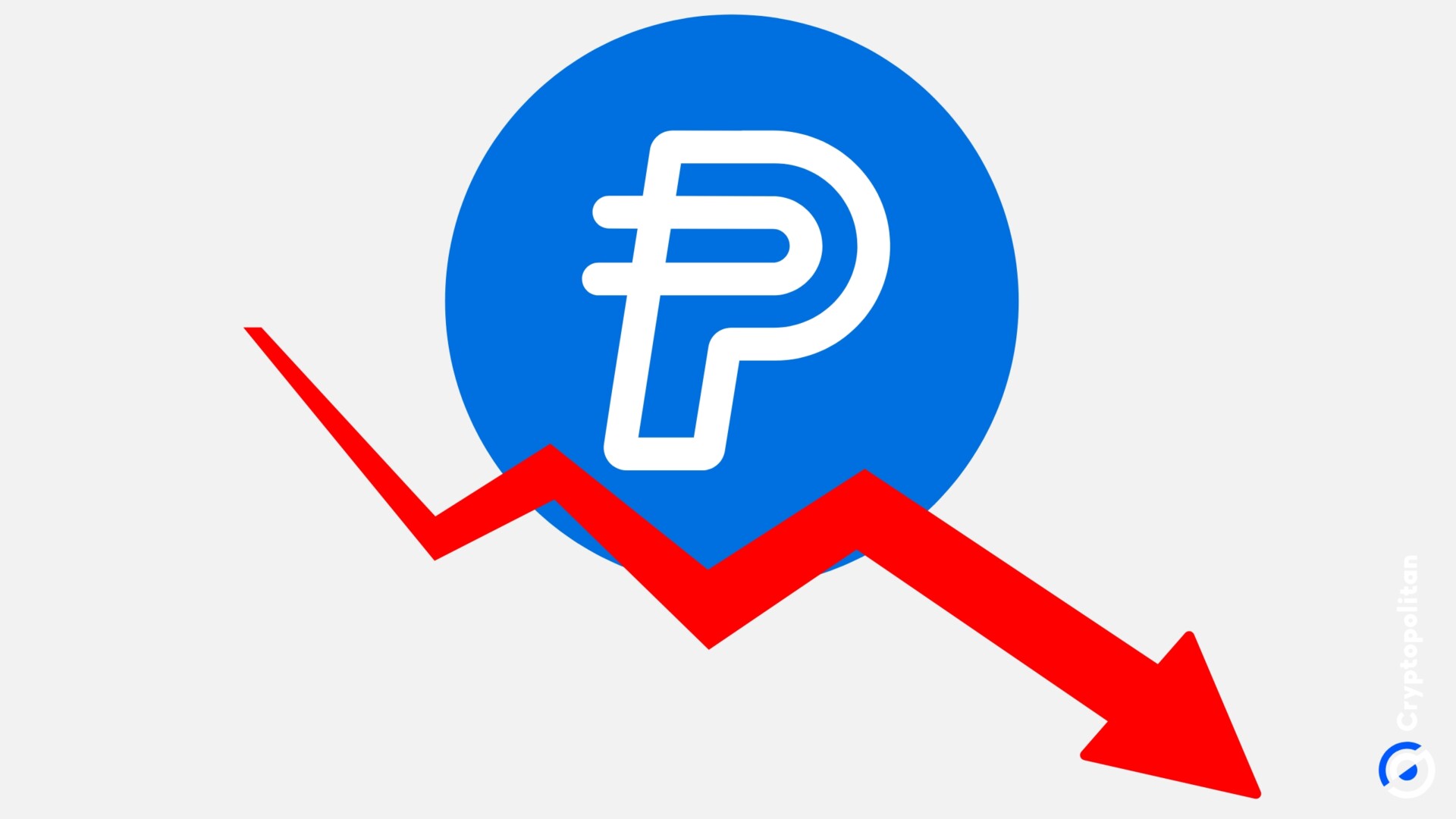If you’re interested in the world of cryptocurrency, particularly stablecoins, this article is super important because it explains how one of the big players, PayPal, is facing some challenges with its PYUSD stablecoin. Stablecoins are special types of cryptocurrency that are tied to something stable, like the US dollar, making them less volatile than other coins like Bitcoin. PayPal’s PYUSD is one of these stablecoins, and while it started out strong, its market value has dropped significantly—by about 40% since August 2024. But why? And what does it mean for the future of digital money?
What’s Happening with PYUSD?
PayPal launched its PYUSD stablecoin in August 2023, first on the Ethereum network and then on the Solana blockchain in May 2024. By August 2024, it had quickly grown in popularity and was even the fourth-largest stablecoin with a market cap over $1 billion. Now, however, its value has dropped to $618 million—a huge 40% decrease.
The main reason for this drop is because fewer people are holding or using PYUSD on Solana, where it had gained a lot of traction. This is important because stablecoins like PYUSD work based on trust and use, meaning that their value depends on how much people are willing to buy, hold, or trade them.
Why Did PYUSD’s Value Drop?
The decline in PYUSD’s market cap is closely tied to what’s happening with Solana-based platforms like Kamino, Drift, and MarginFi. These platforms were offering really high yields (like interest) to people who deposited PYUSD. At one point, Kamino was paying up to 17% in yields! This attracted a lot of people to hold PYUSD because they could make good money off it. But recently, these yields have dropped significantly, with Kamino now offering less than 7%. When the rewards for holding PYUSD went down, many people stopped using it, causing the circulating supply (how much PYUSD is out there) to shrink.
A key figure in the crypto world, Haseeb Qureshi from DragonFly Capital, pointed out that the drop in yields directly affected how many people were willing to keep their money in PYUSD. He basically said, “Without the high rewards, there’s not as much incentive to hold PYUSD.”
Could Things Turn Around?
The situation isn’t all bad, though. Kamino recently added PYUSD to its “altcoin market,” which lets users borrow against other types of tokens, including fun coins like BONK (a memecoin). This means more people might start using PYUSD again because Kamino is offering an extra $10,000 per week in rewards for depositors. So, there’s a chance that the demand for PYUSD could increase again, reversing its decline.
Why Is This Important?
Understanding what’s going on with PYUSD is essential for anyone who wants to build their knowledge of cryptocurrencies. It shows how the value of a stablecoin can fluctuate not just because of market conditions but also due to incentives offered on different platforms. If you’re interested in investing or trading crypto, you need to be aware of how different platforms and their reward systems can affect the value of your assets.
Key Terms to Remember:
- Stablecoin: A cryptocurrency tied to a stable asset, like the US dollar, to reduce volatility.
- Market Capitalization: The total value of all coins in circulation.
- Yield: The interest or rewards you earn for holding or lending a cryptocurrency.
- Circulating Supply: The amount of a particular cryptocurrency currently available on the market.
Final Thoughts
PayPal’s PYUSD is still one of the top stablecoins out there, even though it has faced a big drop in its market cap. By understanding how platforms like Kamino influence the value of stablecoins through rewards, you can better navigate the complex world of crypto. Learning about these trends helps you stay informed and potentially spot new opportunities in the market!



